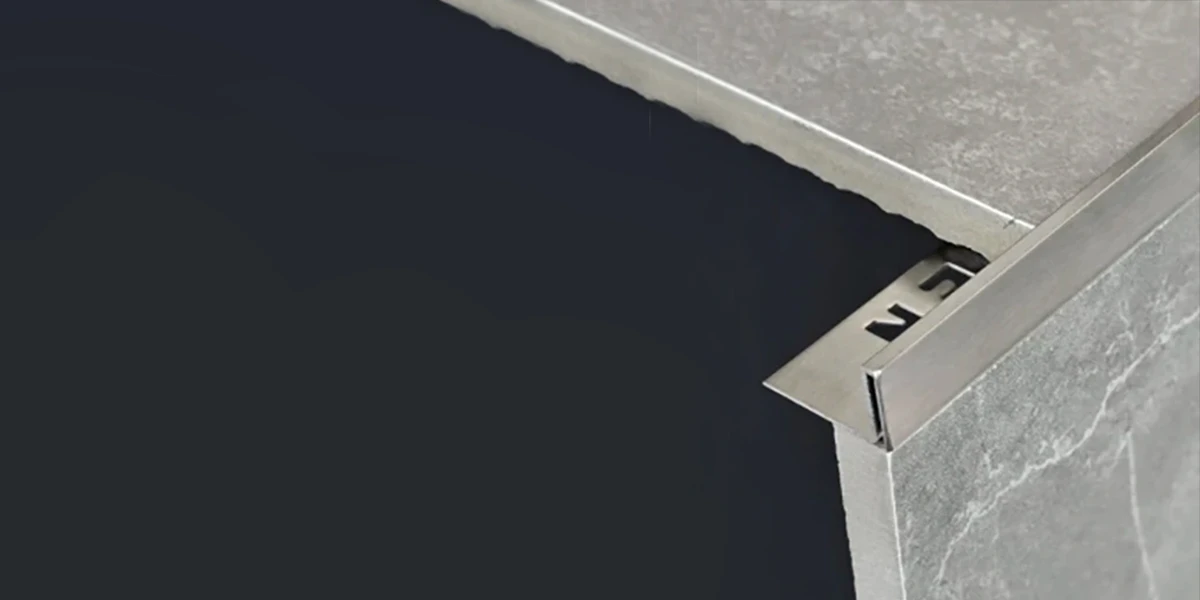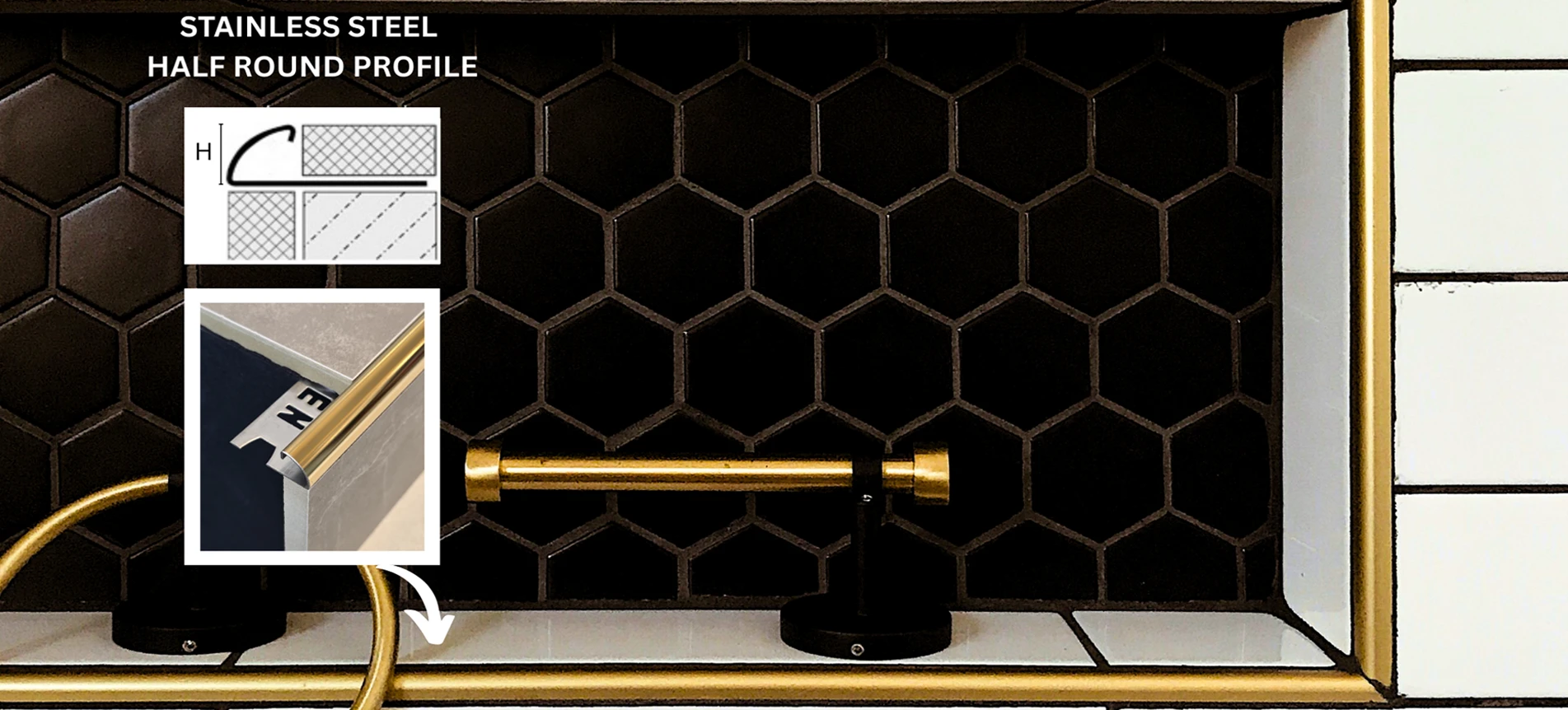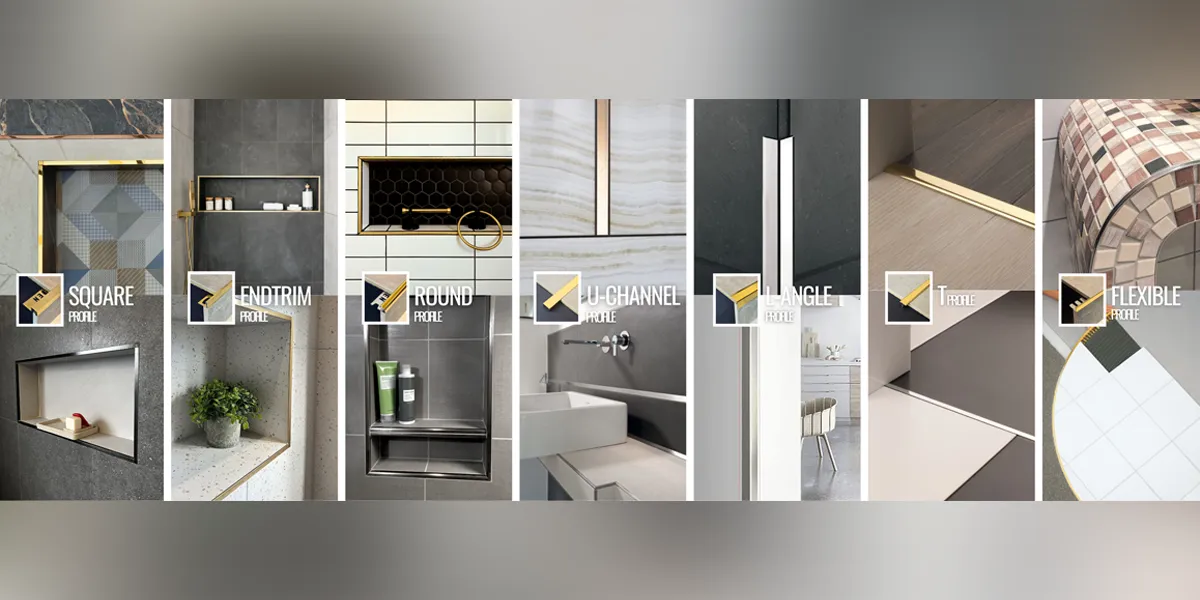
How to Choose the Right Tile Trim for Kitchen Walls
Tile trim for kitchen renovation is one of those little details that can make or break the finish and longevity of your tiled walls. Whether you’re updating your backsplash, remodeling your kitchen, or simply repairing sections around doorways, the trim you use is instrumental in both appearance and function.
This guide will assist homeowners, DIY enthusiasts, and professionals in selecting the most suitable tile trim for their kitchen area. We will also discuss common materials, various trim types such as bullnose and box edge, and provide tips on how to properly install them.
Why Tile Trim for Kitchen Walls Is Important
Tile trim for kitchen walls is so much more than just an aesthetic consideration: this is to shield the tiled surfaces from damage while giving the kitchen a neat appearance. Without trim, the tiles’ edges are left out in the open, subject to chipping, cracking, and gathering dirt.
Here are some reasons why trim is necessary:
- It safeguards edges from chips and water damage.
- It even forms transitions around corners or where tile intersects other materials.
- It adds overall look and quality to the kitchen.
- It minimizes upkeep by avoiding the development of grime in corners or uncovered edges.
Selecting the appropriate trim doesn’t only put the finishing touch on your project—it makes it stronger.
Most Popular Types of Tile Trim for Kitchen
Various types of trim work well in different spaces in the kitchen. Depending on the design and tile pattern you have, you may use one or several of the following types of trim:
Bullnose tile edge is a tile that has a rounded-off edge, ideal for rounding off the look of tiled corners and edges. It’s often used at wall or backsplash ends and offers a smooth, classic appearance. If you’re working with ceramic tiles, use bullnose ceramic tile edging to keep the material and texture the same.
Box square edge tile trim is ideal for modern kitchens that require sharper lines and a defined profile. If your tile design is contemporary or minimalist, this trim adds a bold edge without being overwhelming. It also offers excellent protection in high-traffic sections of the kitchen.
Need a bit of a curve on the finish? Tile nose trim is a compromise between square edge and bullnose. It’s rounded but not as full as a bullnose, and it provides a gentle softened edge that’s effective around countertops or over backsplash ends.
When tiling near doors, tile door trim and door tile trim are both essential. These trims cover sharp edges and create clean transitions where tiles meet door frames. They prevent cracking from foot traffic and add a neat frame around entrances.
Doorway tile trim is another must-have when your tiled kitchen space connects to another room. This type of trim covers the threshold between flooring types and ensures a safe, smooth, and stylish transition.
For areas where tiles meet at a corner, like internal walls or recessed shelves, use internal edge tile trim. These help hide rough tile edges in corners and make grout lines look neat and even. They’re particularly useful where walls meet countertops or in tiled window areas inside the kitchen.
Selecting the Proper Tile Trim
To select the right tile trim for kitchen work, consider both functional and aesthetic considerations:
- Tile Thickness
It may seem obvious, but your trim must be the same thickness as your tile. Purchasing a trim that is too thick will create a gap, and one that is too thin will not lie flat. Proper measurement is important before going shopping.
- Material Type
Trim is available in different base materials such as ceramic, PVC, and metal. Ceramic trim serves perfectly with ceramic tiles, particularly when used with bullnose ceramic tile edging. PVC trim is light and economical, and aluminum or stainless steel trims are ideal for strength and contemporary looks.
- Visual Style
Do you want your trim to disappear or pop out? A tile-color-match trim will blend right in. A metal or contrasting trim will provide definition and accentuate tile edges.
- Kitchen location
Various locations need various trims. Apply tile nose trim to open edges of tiled countertops, door tile trim to entryways, and internal edge tile trim to corners. A combination strategy will produce the cleanest, most efficient outcome.
- Kitchen Design Theme
For classic kitchens, a bullnose tile edge with a rounded curve would be more suitable. Box square edge tile trim in sleek finish is suitable for contemporary and minimalist designs. Go to a reputable building materials store and see physical samples in daylight to be certain.
Tips for Installing Tile Trim
Knowing how to install Tile trim is just as important as choosing the right kind. Here’s a straightforward guide for installing tile trim in your kitchen:
- Plan Layout in Advance
Before applying adhesive or placing any tiles, plan where each trim will go. Dry-fit the trim pieces to check placement.
- Cut Accurately
Use a suitable trim cutter or saw with a fine blade to prevent rough edges. Cut slowly in order to reduce splintering or breaking—particularly with ceramic trims.
- Use Matching Adhesive
Use tile adhesive or silicone-based glue that adheres properly, depending on the material of the trim. Always apply adhesive evenly over the edge tile or surface.
- Check Eye-Level Finishes
Most walls in the kitchen are at eye level, so trim cuts and alignment are paramount in areas that can be seen. Be especially careful where countertops, windows, and backsplash edges are involved.
- Grout with care
After your trim is installed and your tiles are in place, fill in the area around the tile and trim edge with grout to seal it completely. This provides a clean finish and prevents moisture from seeping inside.
If you’re not sure, seek assistance at your hardware store or engage a tiling expert for flawless results.
Mistakes to Avoid
Steer clear of the following mistakes to save time and money in your kitchen makeover:
Selecting improper profile or thickness: Always pair trim depth with tile width.
Missing trim at doors or corners: Exposed edges chip or appear incomplete.
Not coordinating with the overall design: Unmatching trim can conflict and command unwanted attention.
Purchasing from unsuitable tile trim suppliers: Substandard quality can hamper appearance and crack over time.
Where to Buy Quality Tile Trim
Go to a reputable store that sells building materials and carries a large selection of tile trims made of various materials, color-coded, and in different profiles. Good tile trim suppliers usually offer professional recommendations, customer service, and even samples so you can see how the trim will appear along with your current tiles.
Take photos and measurements of your kitchen wall before buying. Present them to your local retailer if you can—they may introduce you to a better choice you hadn’t thought about.
Conclusion
Putting in the correct tile trim for kitchen walls improves your tiling job, guards edges, and refines your kitchen’s appearance. From tile door trim to streamlined box square edge tile trim, the correct option makes a huge difference.
Select according to your tile thickness, kitchen design, and preferences. Don’t ever be afraid to ask questions at your regional building supply store or tile trim professionals. Therein lie options for almost every tile nose trim style, internal edge tile trim, and bullnose ceramic tile edging that a homeowner could ever want for their project.
With careful planning and correct installation, your kitchen walls will remain clean, secure, and professionally finished for many years to come.
Frequently Asked Questions
Do I need tile trim on every edge in my kitchen?
Not every edge has to have it, but any place where tile ends—that’s at doorways, against countertops, or an open edge—needs it. Without tile trim, tiles can chip or just look unfinished.
What is the difference between bullnose and box square edge trims?
The bullnose tile edge has a rounded finish and goes perfectly with the classic style; box square edge tile trim possesses sharper angles for a bolder and more modern feel.
Can I use different tile trims in one kitchen, or should they all match?
Sure, you may use different tile trims in a single kitchen if they are complementary to your overall design. For instance, you could employ bullnose ceramic tile edging for backsplash endings and door tile trim for door transitions. Similar finishes or colors should be kept to maintain a cohesive look.



